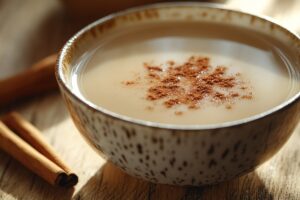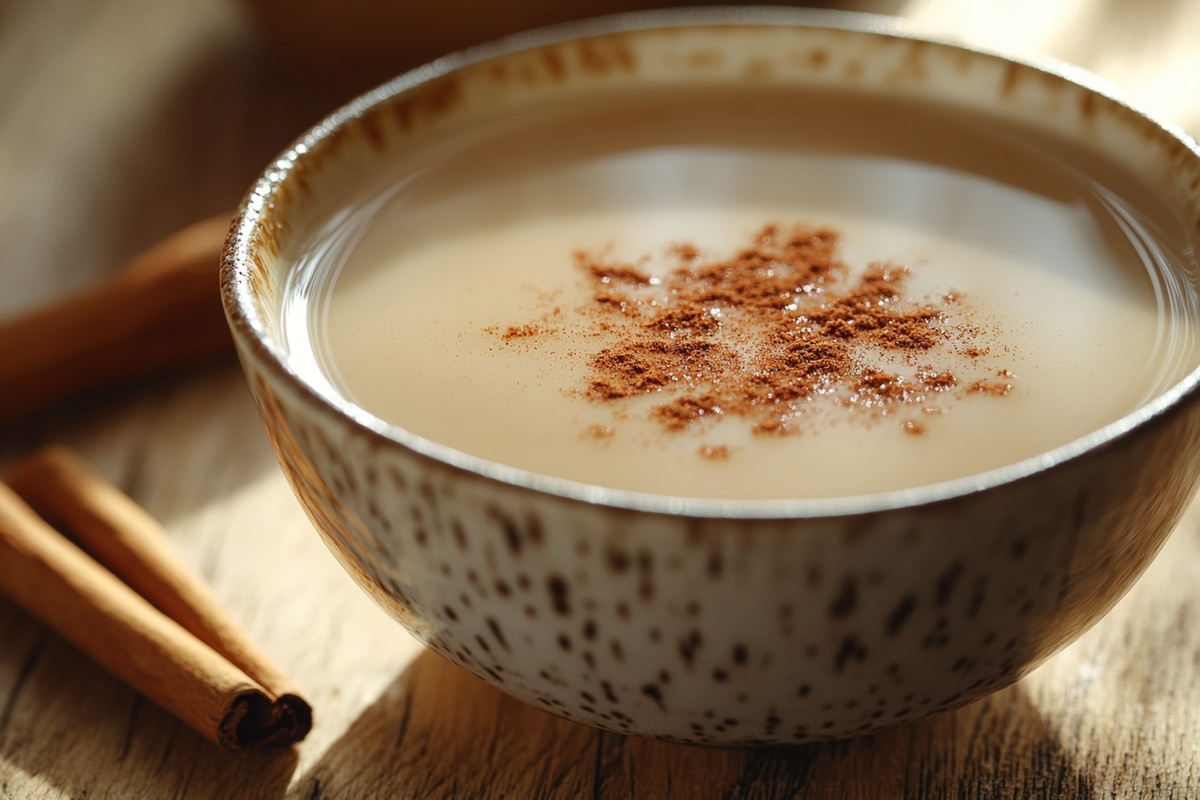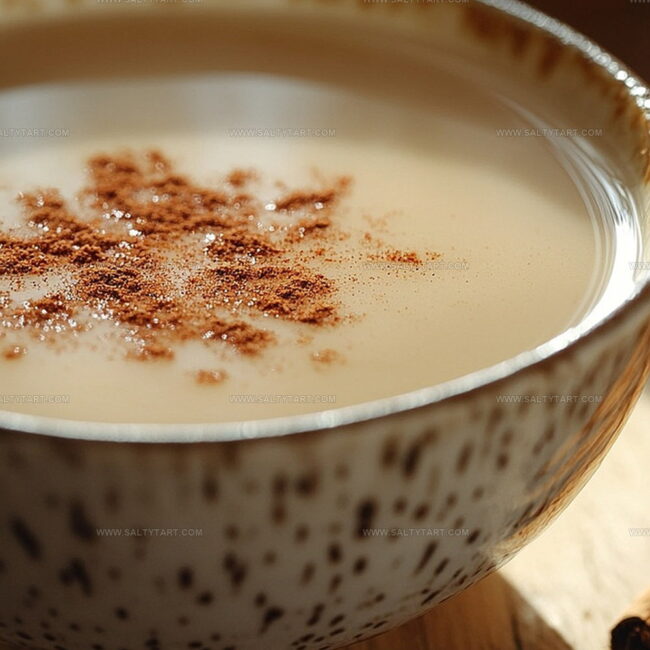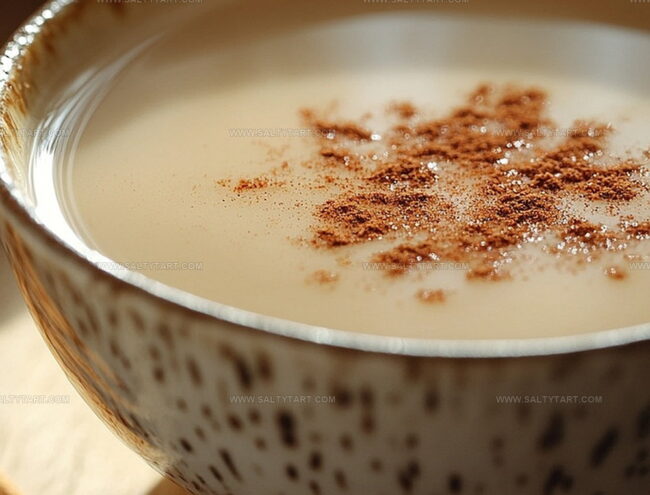Soothing Cinnamon Sore Throat Tea Recipe for Sweet Relief
Warm, soothing cinnamon sore throat tea becomes your ultimate comfort companion during chilly days.
Spices dance through steaming liquid, creating a healing melody for irritated throats.
Generations of wellness wisdom combine in this simple remedy.
Ancient cultures understood the power of natural ingredients to support healing.
Gentle cinnamon brings warmth and potential relief to uncomfortable throat sensations.
Brewing this tea requires minimal effort and promises maximum comfort.
You’ll find yourself embracing each sip as a moment of gentle self-care.
Let’s brew some healing magic right in your kitchen.
Reasons to Enjoy Cinnamon Sore Throat Tea
Ingredients for Cinnamon Sore Throat Tea
Base Ingredients:Flavor Enhancers:Sweeteners and Soothing Agents:How to Brew Cinnamon Sore Throat Tea
Step 1: Prepare Boiling Water
Select a small saucepan and fill it with water. Heat the water until it reaches a rolling boil, creating a bubbling surface that indicates high temperature.
Step 2: Infuse Healing Spices
Drop the fragrant cinnamon stick into the boiling water. If desired, add fresh ginger slices to enhance the tea’s warming and healing properties.
Step 3: Simmer and Extract Flavors
Reduce the heat to low, allowing the water to gently simmer. Let the spices steep and release their medicinal essence for 8-10 minutes, creating a rich and aromatic brew.
Step 4: Strain and Transfer
Carefully remove the saucepan from the heat source. Pour the hot liquid through a fine-mesh strainer into your favorite mug, capturing the pure, spice-infused tea.
Step 5: Sweeten and Enhance
Add a generous drizzle of golden honey and a splash of fresh lemon juice. Stir the tea thoroughly to blend the sweet and tangy flavors, creating a soothing healing drink.
Step 6: Savor the Comfort
Wrap your hands around the warm mug and take slow, comforting sips. The tea will help soothe your sore throat and provide natural relief.
Helpful Tips for Cinnamon Sore Throat Tea
Flavor Variations for Cinnamon Sore Throat Tea
Best Pairings for Cinnamon Sore Throat Tea
Pair this warm cinnamon tea with soft, gentle foods that won’t irritate your throat.
Serve alongside plain toast with a thin spread of butter or warm oatmeal to provide gentle nutrition while recovering.
Complement the tea with room temperature water or herbal chamomile tea to keep hydration levels high and support throat healing.
Include a small portion of Greek yogurt with a drizzle of honey to provide additional soothing proteins and probiotics that support immune system recovery.
Proper Storage for Cinnamon Sore Throat Tea
FAQs
Cinnamon contains natural anti-inflammatory and antimicrobial properties that can help reduce throat inflammation and fight harmful bacteria causing throat discomfort.
Ground cinnamon can work, but a cinnamon stick provides a clearer, more subtle flavor and allows better extraction of healing compounds during steeping.
You can safely consume this tea 2-3 times daily during illness, helping to soothe your throat and potentially speed up recovery.
While generally safe, consult a pediatrician before giving herbal teas to children, especially if they have specific health conditions or allergies.
Print
Cinnamon Sore Throat Tea Recipe
- Total Time: 15 minutes
- Yield: 1 1x
Description
Soothing Cinnamon Sore Throat Tea brings comfort and healing with its warm, spicy embrace. Gentle ingredients blend perfectly to help you combat throat discomfort and support your body’s natural wellness.
Ingredients
Main Ingredients:
- 1 cinnamon stick (or 1/2 teaspoon ground cinnamon)
- 2 slices fresh ginger
- 1 cup water
Sweeteners and Flavor Enhancers:
- 1–2 teaspoons honey
- Juice of 1/2 lemon
Optional Spices:
- 1 pinch ground cloves
- 1 pinch ground turmeric
Instructions
- Heat water in a small saucepan until it reaches a rolling boil at 212°F.
- Gently lower cinnamon stick and ginger into the bubbling liquid, allowing their aromatic essences to infuse.
- Reduce flame to low, letting the mixture gently simmer for 10 minutes, developing a rich, warming flavor profile.
- Carefully remove the pan from heat source, preventing over-extraction of spices.
- Position a fine-mesh strainer over a therapeutic mug, pouring the golden-hued liquid through to capture any solid ingredients.
- Drizzle honey into the strained tea, stirring until completely dissolved and creating a silky-smooth texture.
- Squeeze fresh lemon juice into the warm concoction, balancing the sweetness with a bright, citrusy undertone.
- Consume immediately while piping hot to maximize the soothing properties and help alleviate throat discomfort.
Notes
- Customize spice levels by adjusting the amount of cinnamon and ginger to suit your taste preferences.
- Opt for raw honey for enhanced natural healing properties and additional antibacterial benefits.
- For a dairy-free and vegan version, replace honey with maple syrup or agave nectar.
- Prepare a larger batch and store in the refrigerator for up to 3 days, reheating gently before consuming.
- Prep Time: 5 minutes
- Cook Time: 10 minutes
- Category: Tea
- Method: Simmering
- Cuisine: American
Nutrition
- Serving Size: 1
- Calories: 25 kcal
- Sugar: 6 g
- Sodium: 2 mg
- Fat: 0.1 g
- Saturated Fat: 0 g
- Unsaturated Fat: 0.1 g
- Trans Fat: 0 g
- Carbohydrates: 7 g
- Fiber: 0.5 g
- Protein: 0.1 g
- Cholesterol: 0 mg




Jess Martinez
Contributing Recipe Writer & Nutrition Consultant
Expertise
Southwestern and Latin American cooking, Nutritional analysis and healthy recipe planning, Cultural food traditions, Modifying traditional dishes for better health
Education
Santa Fe Community College
Certificate in Culinary Arts
Focused on mastering the flavors and cooking methods of traditional Southwestern cuisine.
Jess’s love for bold, homegrown flavors led her straight into the world of Southwestern cooking and cultural nutrition.
After completing her Certificate in Culinary Arts at Santa Fe Community College, she made it her mission to show that good-for-you food can still taste incredible.
At saltytart.com, Jess shares vibrant, health-conscious recipes with roots in tradition but a fresh, modern twist. When she’s not testing new recipes, you’ll find her at local growers’ markets, tending her herb garden, or digging into food history books.